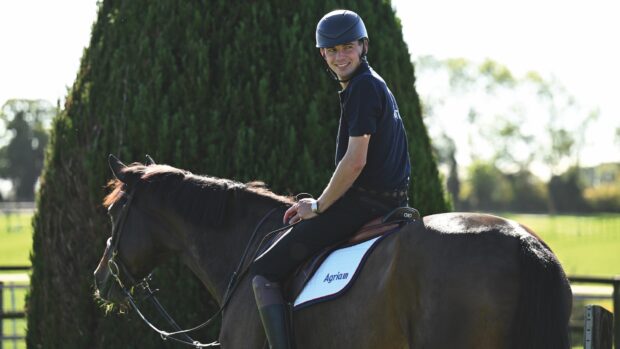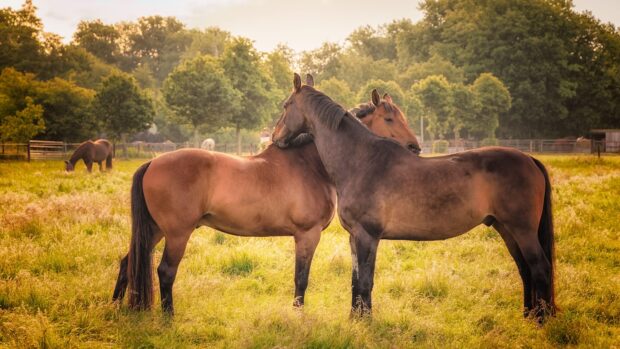Preparation isn’t just about fitness and strategy, you have to make the day as safe as possible for both you and your horse.
You cannot put a price on safety, so it is worth protecting him with the best equipment money can buy. There is no point in complaining about your tack. The equipment you use is your responsibility, and the priority should always be safety.
Tacking up
- The bridle must be in good condition and a perfect fit.
- Non-slip, rubber reins are a necessity.
- For an inexperienced rider, it is better to use a plain snaffle despite the temptation to be artificially in control, as a novice rider can punish the horse’s mouth if a bitting mistake is made.
- However, a stronger bit, such as a French link or a pelham, can be beneficial if the rider is experienced.
- Bit guards are also a wise investment.
- Whether to use a numnah or not is often personal preference, but it is generally more comfortable for the horse if he has extra padding.
Booted up
As the horse jumps at speed, he is likely to strike himself with his hooves, so some form of protection is essential.
- Bandages and a porter guard at the back of the tendon and fetlock offer great protection, but fitting bandages is an acquired skill. There is a fine line between cutting the horse’s blood circulation off and fitting bandages so loose that they slip. (Vet-wrap bandages don’t absorb moisture and rarely slip).
- If you are not confident about fitting bandages, it may be better to use boots.Professional’s Choice sports medicine boots, are good for soft skin. They also protect from knocks, absorb concussion andgive support. Clarendon boots or plain leather boots are also suitable. But remember that Velcro is not enough – if the boot doesn’t have buckles, use tape.
- If a horse is not prone to knocking himself behind, brushing boots are OK, but they offer no protection if a horse hits a fence hard.
- Over-reach boots are quite cheap and could save hundreds of pounds in vet bills. The pull on boots are cumbersome, but are less likely to come off during competition.
Make sure over-reach boots are not too long. They should not be dragging on the ground. If they are, trim them.
- It doesn’t have to be wet and slippery to use studs. The extra grip is always helpful.
Geared up
- A jockey skull cap is a must. New safety standards include the PAS 015 and the EN 1384. Invest in a new hat if your old one is not up to standard.
- A body protector is compulsory at most hunter trials. Look out for the accepted standards of Class 1, 2 or 3.
- Never wear leather gloves as they can slip when wet. Gloves with a good grip are a must.


